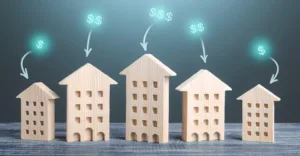I recently made friends with Rich, an investor who was very interested in senior housing. Knowing the increase in aging baby boomers in our population, Rich was anxious to get into senior housing and obtain the higher profit margins he had heard about.
While many investors look for the obvious direction of this aging population- senior assisted living- there are a few other trends that are influencing the market, which have also been brought about by the baby boomer generation and have implications for real estate investors.
1. Baby Boomers Retiring: The Silver Wave Hits Housing Supply
Roughly 10,000 baby boomers turn 65 every day. Over the next decade, millions will retire, downsize, or pass on their real estate assets—triggering one of the largest shifts in property ownership in U.S. history.
Economic Implication:
This generational transition will release a significant amount of single-family housing inventory, especially in established suburban markets. At the same time, demand for age-friendly housing—low-maintenance homes, senior living facilities, and walkable communities—will rise sharply.
Investor Implication:
This shift opens opportunities in two directions
- Acquiring and repositioning older properties:
Many older homeowners when ready to move out of their long-time homes, leave behind homes that are very dated, but in excellent locations. This presents a tremendous opportunity for the house flipper or BRRR investor to purchase and profit from homes that are usually well maintained but need cosmetic updates.
- Rental housing designed for the “active senior” lifestyle:
While many investors look to assisted living facilities as the place to go, an often-overlooked opportunity is traditional rentals purposed for the older adult.
- There is a significant number of older renters that are living on fixed incomes, and rent for economic reasons. These renters need basic accommodations, with the main criteria being ONE LEVEL living, and adaptability of aging in place with ramps and limited steps.
- There is also a segment of older renters with affluent means, who choose to rent for the lifestyle ease it provides. These renters may often split their time between a location where their family and grandchildren live, and a southern warmer location for the winter months. Higher end rentals that are one level and meet the desires of an upscale but amenity rich environment will also thrive.
2. Social Media: A New Force in Real Estate Demand
While most baby boomers are not social media influencers, an interesting dynamic is taking place. Many young people are finding love in ‘What is old is new again’ with many older hobbies like knitting, woodworking, and making sourdough bread are winning the hearts of a whole new younger generation.
Economic Implication:
What does this have to do with real estate? Many older communities where baby boomers are leaving are seeing a resurgence in popularity with younger people.
The younger generation, due to influencers on social media, are now heavily inclined to select housing that is walkable, near amenities and near work.
“Instagrammable” communities with walkable streets, mixed-use amenities, and aesthetic appeal are commanding price premiums.
Many older established neighborhoods are seeing a revitalization of a younger crowd, along with historic downtowns and unique places becoming sought after by a younger generation.
Housing Industry Effect:
Social media has accelerated housing preference changes—especially among millennials and Gen Z buyers who prioritize lifestyle over square footage. Smaller homes in amenity-rich areas to continue outperforming larger suburban homes that lack cultural and visual appeal.
Investor Implication:
When the older baby boomer leaves their dense amenity rich neighborhood, a whole new generation of young people are anxious to take their place, living in homes and neighborhoods rich with history and quality.
Investors who understand how to leverage digital visibility can accelerate lease-up periods on rentals and increase property values on flips in these ‘hot’ older neighborhoods, that are transitioning from Baby Boomer to Millennials and Gen Z.
Properties that photograph and market well online are outperforming others in the same submarket, because of the trends over social media which enhance desirability.
3. ADUs
For many members of a younger generation, their homes are being coming multi-generation by choice or necessity. Personally, I have joined this group, recently having my mother move into our home. This provides both a social and economic benefit for many families.
- Because of the increase in baby boomers aging, the trend of ADUs will continue to accelerate, with many more family needing extra space on the same property for their loved ones.
- Expect more multi-generational housing solutions and conversions of existing homes to duplexes or ADUs (Accessory Dwelling Units).
- While the regulatory landscape is still an uphill battle on this one, as pressure mounts from a practical standpoint, this level will continue to change. In PA and MD, some areas will allow ‘ECHO’ housing, which is an additional unit permitted just for an aging family member.
If you would like to learn more about ADUs in our region, please see our ADU articles here.
4. Takeaways for Investors
- Invest in Visibility: Whether commercial or residential, properties that market well online, with historic or nostalgic touches attract tenants faster and sell for more.
- Position for the Silver Transition: Track aging demographics at the county level. Anticipate changes in the older population transitioning from ownership to renting.
- Be a market maker: As the need for ADUs increase, the regulation changes need to be influences from investors with boots on the ground. When you have a property that is ripe for ADU addition, go to your local County/Municipality to ask about having the zoning ordinance updated to permit these. Change can start locally, driven by smart investors willing to do the work to bring change for good in their communities.
Conclusion
The economy’s visible trends—social media, retiring baby boomers, changing regulations—are more than headlines. They’re directional signals of where money, people, and opportunities are moving. The housing and commercial real estate industries will evolve alongside them, rewarding investors who understand the story behind the data and act before the rest of the market catches on.
The investors we work with are passionate about being market drivers- and not just market followers. If you are looking to grow your investments in proactive, community positive approach, please reach out to us to schedule a strategy call.





